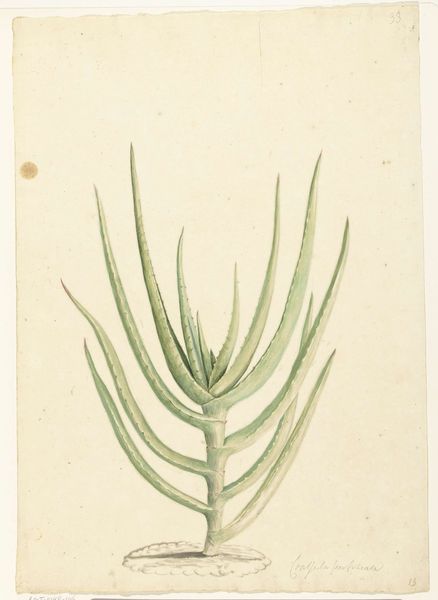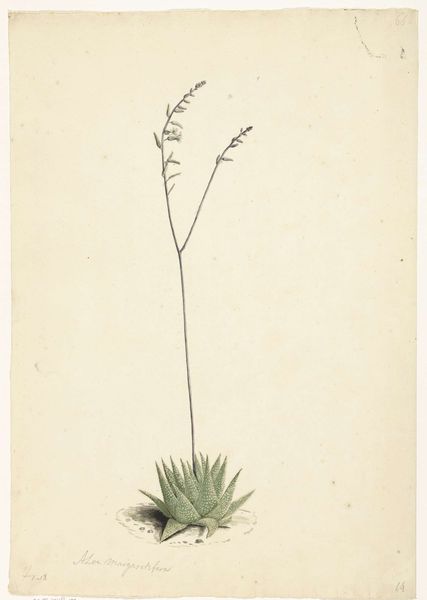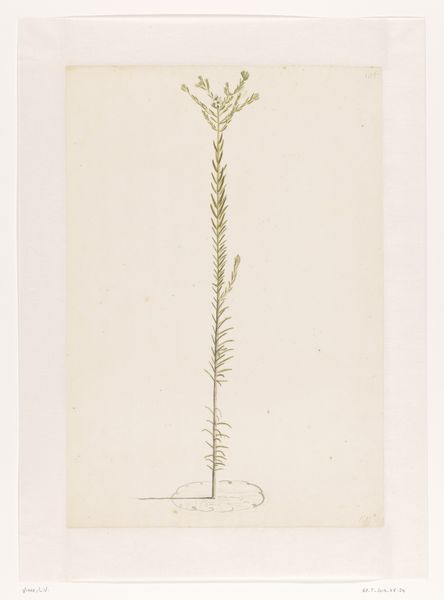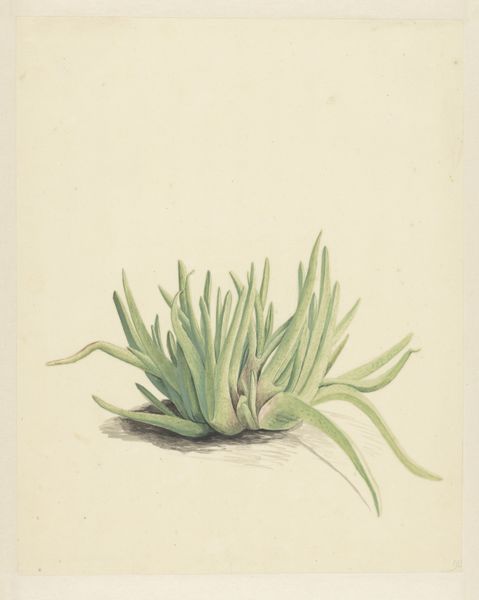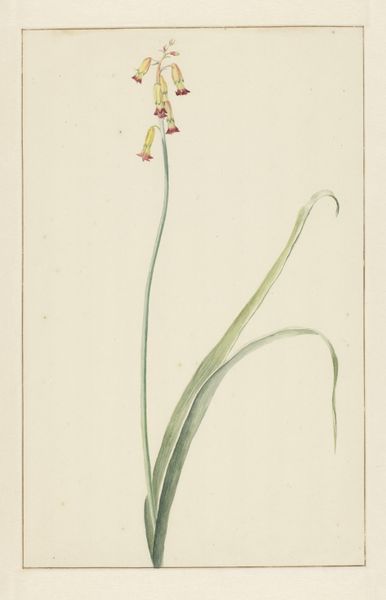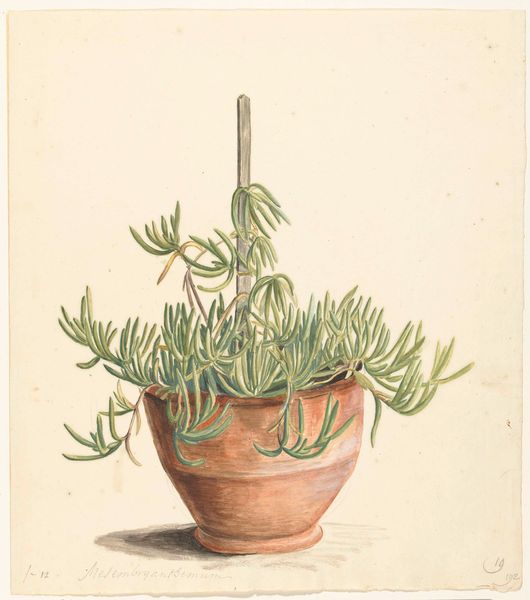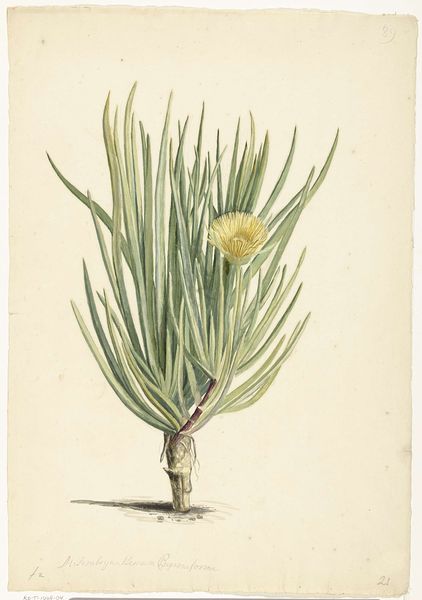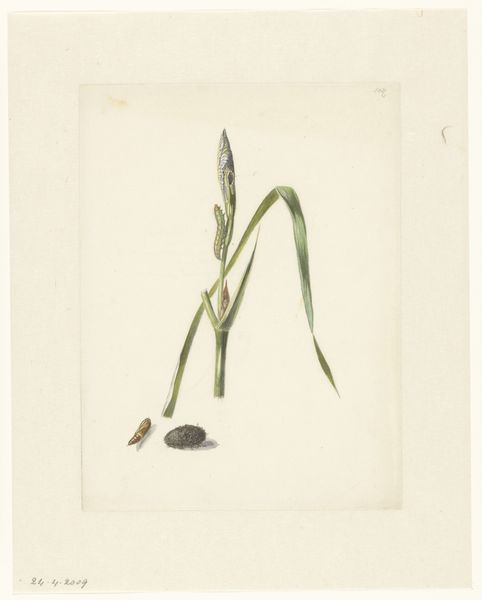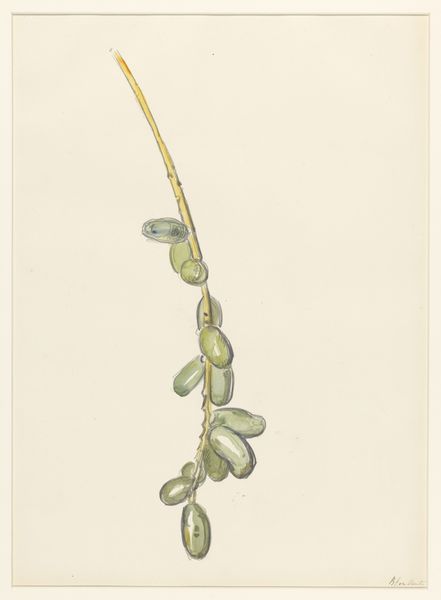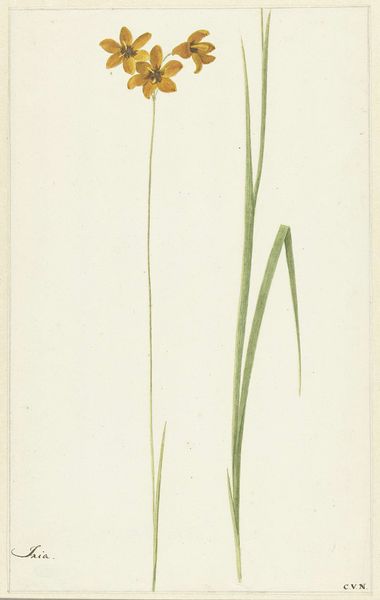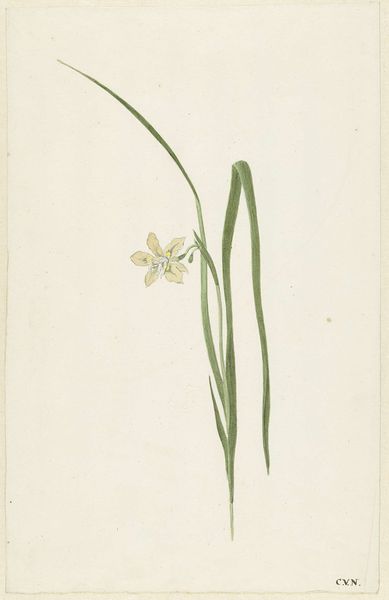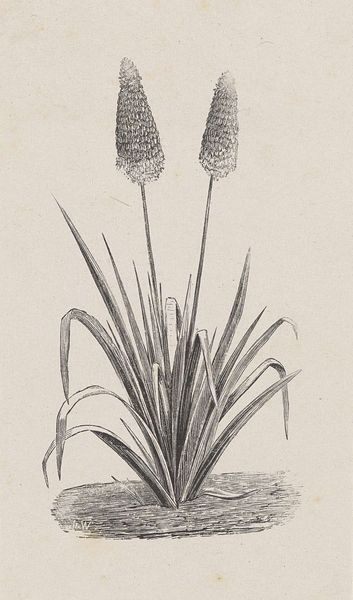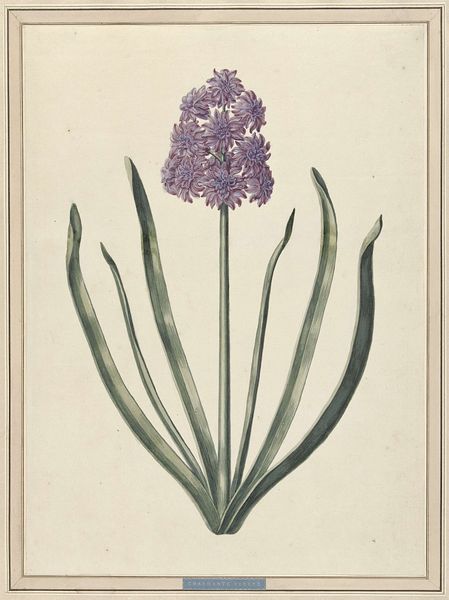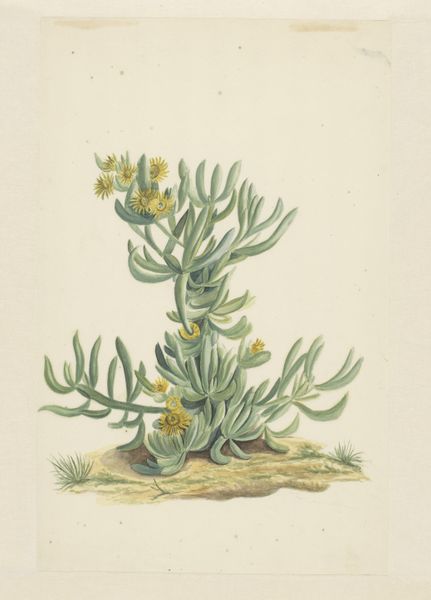
painting, watercolor
#
painting
#
landscape
#
botanical illustration
#
watercolor
#
plant
#
botanical art
#
realism
Dimensions: height 390 mm, width 287 mm
Copyright: Rijks Museum: Open Domain
Curator: This watercolor painting, titled "Cactus," comes to us from Laurens Vincentsz. van der Vinne. It was likely created between 1688 and 1729, and currently resides here at the Rijksmuseum. Editor: Striking! My first thought is its directness, this singular, almost confrontational cactus dominating the off-white page. There’s a vulnerability in its stark presentation. Curator: It's interesting you say "vulnerability." When I look at botanical illustrations of this era, especially of specimens brought back from colonial expeditions, I think about power structures. How did the artist acquire this cactus? Whose labor facilitated its transportation and study? The simple presentation obscures a complicated history of extraction. Editor: I agree, that backstory matters. But looking closely, the cactus isn't rendered with cold, scientific precision. See the slight variations in the green washes, the delicate rendering of the spines. It feels handmade, a labor of love perhaps. I wonder about Van der Vinne's process; what kind of paper did he use, what was the pigment source and binder. It seems simple, but it’s deceptively refined. Curator: The act of representation itself can be an act of domination. Who gets to define what a "cactus" even is? Indigenous knowledge of this plant would certainly differ from a European botanist’s perspective. Was the original function for science or leisure? Who was its target audience? What did they expect? Editor: Perhaps both. Art and scientific exploration often go hand-in-hand in the era; It may be intended as an attempt to faithfully capture nature. I find myself wondering whether the materials accessible to Van der Vinne—the specific pigments and paper—might have directed some of the outcome and what other similar pieces it relates to within his practice. It’s also clear how a shift in the artist’s hand would alter our contemporary understanding. Curator: Considering its place in the Rijksmuseum, it clearly resonates on some level even now. It serves as a powerful reminder of how entangled art, science, and history really are, when we start deconstructing the different implications regarding identity, politics, and access to raw materials. Editor: Right, that's true for both art and our interpretation of its meanings. Next time I’m in my garden center, I’ll think about where those materials began!
Comments
No comments
Be the first to comment and join the conversation on the ultimate creative platform.
